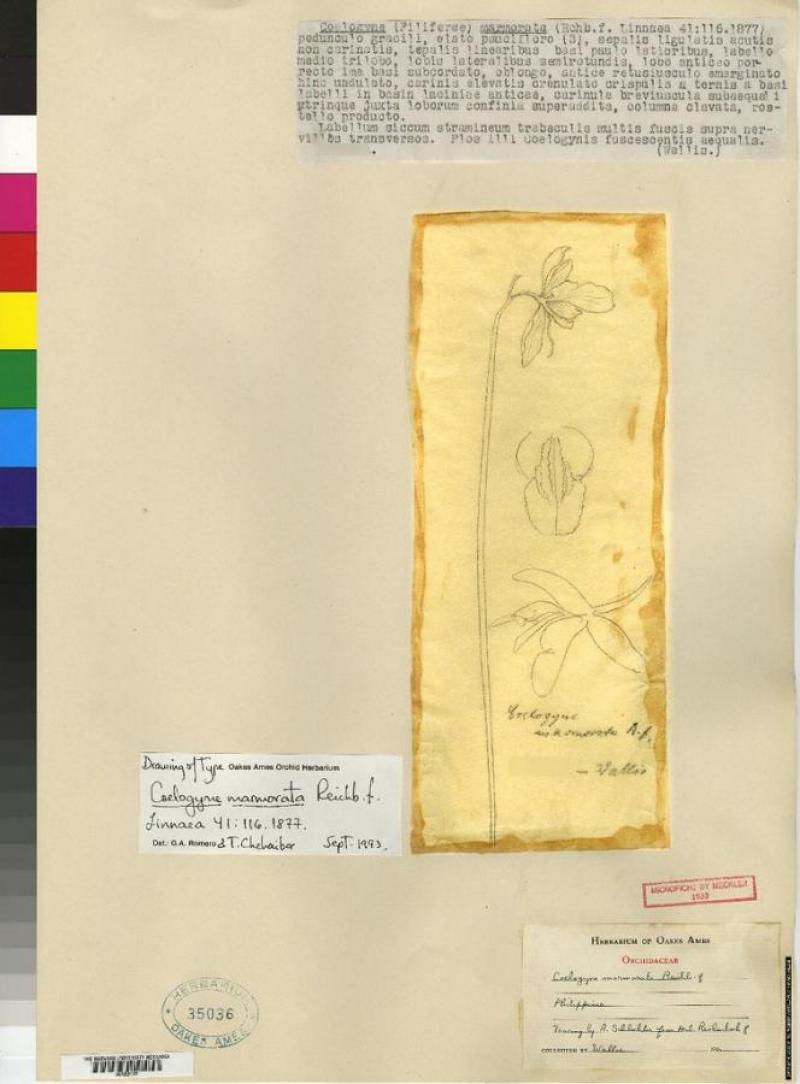Coelogyne marmorata
Also known as: The Marbled Coelogyne refers to the marbled side lobes of the lip in the subfamily: Epidendroideae
Native to: Philippines
General Information
The Marbled Coelogyne refers to the marbled side lobes of the lip is a sympodial warm growing epiphytic orchid belonging to the sub family Epidendroideae native to Philippines.
Plant Description
Sympodial. Grows to 25cm. Each new growth has numerous leathery lance shaped, oblong shaped leaves that grow to 3.5-40cm long. Pseudobulbs grow to 3-10cm
Substrate(s)
- Coarse
- Medium
- Fine
- Bark
- Charcoal
- Spaghnum Moss
- Perlite
Care Notes
These orchids like to be kept on the dry side, but may need to be watered daily during warm weather, and prefer a well draining mix or also do well mounted, provided they can be watered regularly.
These are quite a forgiving orchid, there are no special requirements to get this orchid to flower, just good care and consistent conditions. Larger plants may be more fussy and can react poorly to change; a poorly timed repotting, a pest infection or an unusually hot day can set them back for a couple of years. However, even plants that have been treated poorly can thrive, and if they are set back they often recover much stronger then they would otherwise be.
Climate
Grows at high elevations. Rainfall ranges from 23mm to 1161mm per day, heaviest in August and lightest in January. Humidity ranges from 83% to 93%, highest in July and lowest in January. Temperature ranges from 13C to 26C, highest in April (17C to 26C) and lowest in January (13C to 22C).
Watering
These orchids are sensitive to excessive watering and should only be watered when they look thirsty. Water infrequently and ensure that the roots are dry before watering. Keep an eye on them especially during hot weather as overwatering can lead to rot, whereas underwatering may result in wilting or shriveling, which while unattractive, will not kill the plant.
Fertiliser
Apply liquid based fertiliser per recommended directions. They can benefit from a high phosphate fertiliser leading up to flowering season, followed by a high nitrogen fertiliser when new growth appears, and a balanced fertiliser in other times. These orchids can also tolerate slow release fertiliser applied 1-2 pellets per cup (250ml) of media.
Be sure to flush out excess fertiliser by running water through the media regularly year round. Apply fertiliser regularly at half strength year round. Use a low Nitrogen fertiliser during Winter. Use a high Phosphorous fertiliser during Winter.Potting
It's best to observe the root system when repotting and use that as a guide:
A plant with a short root system will do better in a shallower pot with a fine mix, or mounted on fern or cork supplanted with a good amount of moss or similar material.
A plant with a long root system often does well in a pot filled with moss or fine media, mixing in perlite and charcoal is always beneficial to reduce the likelihood of the mix becoming soggy and keeps it fresh.
A plant with a coarser long root system can be potted in a deeper pot, but with 2/3 coarse material such as bark, expanded clay, or coco chips and topped with moss or similar material. This will allow the moisture to remain inside the pot but give the roots air as well.
This plant does very well in baskets or suspended pots

